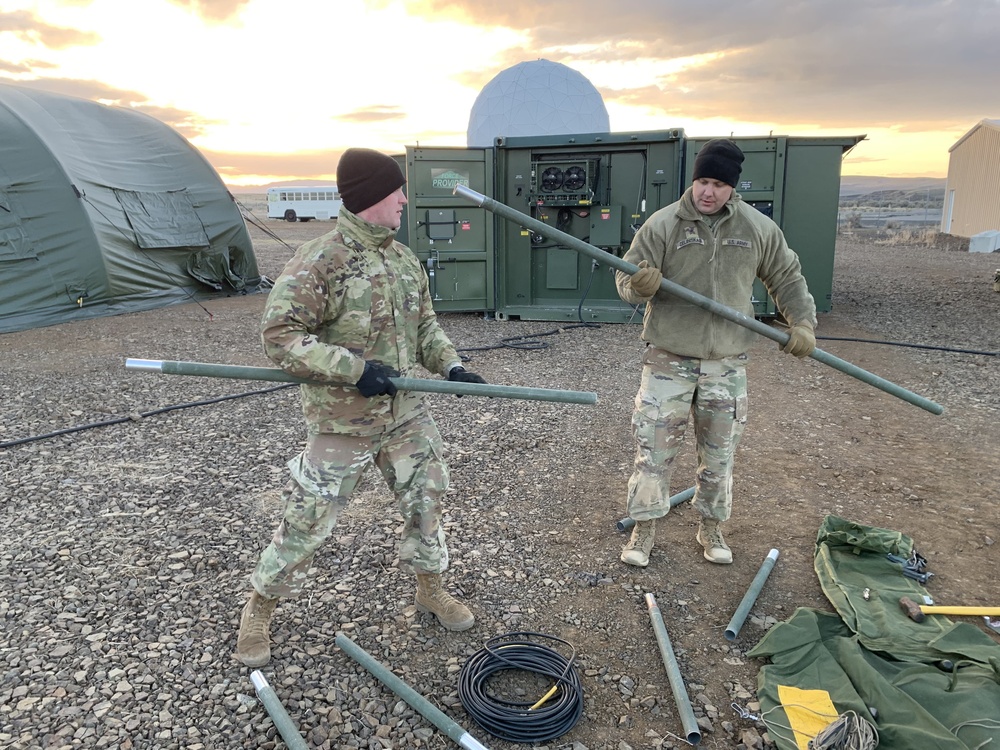BLUF: Two updated TMs contain set-up and breakdown warnings; one specific warning covers an area called the crush zone.
 Photo by Jacob Caldwell
Photo by Jacob Caldwell
Two tactical expanded shelter TMs have been updated for 2023. They include:
- TM 10-5411-201-13&P (Apr 23), which covers one-sided tactical expandable shelters:
- PN 5-4-2828 (60 AMP) NSN 5411-01-124-1377
- PN 5-4-3200 (100 AMP) NSN 5411-01-295-3433
- TM 10-5411-200-13&P (Apr 23), which covers two-sided tactical expandable shelters:
- PN 5-4-3118 (60 AMP) NSN 5411-01-136-9838
- PN 5-4-3201 (100 AMP) NSN 5411-01-294-9866
While both TMs contain shelter set-up and breakdown warnings, one of the most important warnings concerns the area called the crush zone. This is the space that the ceiling and floor panels move through during the shelter opening and closing on the side of the container. If there’s a malfunction of either the fixed roof load balancers or the hinged roof support struts, the force of falling panels could result in the injury or death of anyone standing in the crush zone.
Note that the expandable section or sections (hinged floor and hinged sidewall together) weigh(s) 700 pounds (318 kg). Make sure that nobody is standing in the crush zone when quick release pins are released.

The crush zone is on either or both sides of the shelter;
stay clear of these zones when deploying/closing expansible areas
While the crush zone is the most critical area to note and avoid, there are some other risks with setting up or taking down a shelter. They include:
- Doors, cables, roofs, floors or wall hinges that can pinch fingers.
- Tripping hazards because the shelter is raised off the ground.
- Malfunction of the load balancer. The load balancer assembly is a spring-powered mechanism. Never completely release all the tension from the reel assembly or the cable wrapped around the drum will tangle. Don’t try to repair the load balancer. If the fixed roof load balancers fail, hinged panels could move or collapse without warning.
See the TMs for further cautions and warnings when working with these shelters.
Search for the TMs
HERE. You'll need your CAC to access. Select the ETM/IETM button, then click
Enter Site.